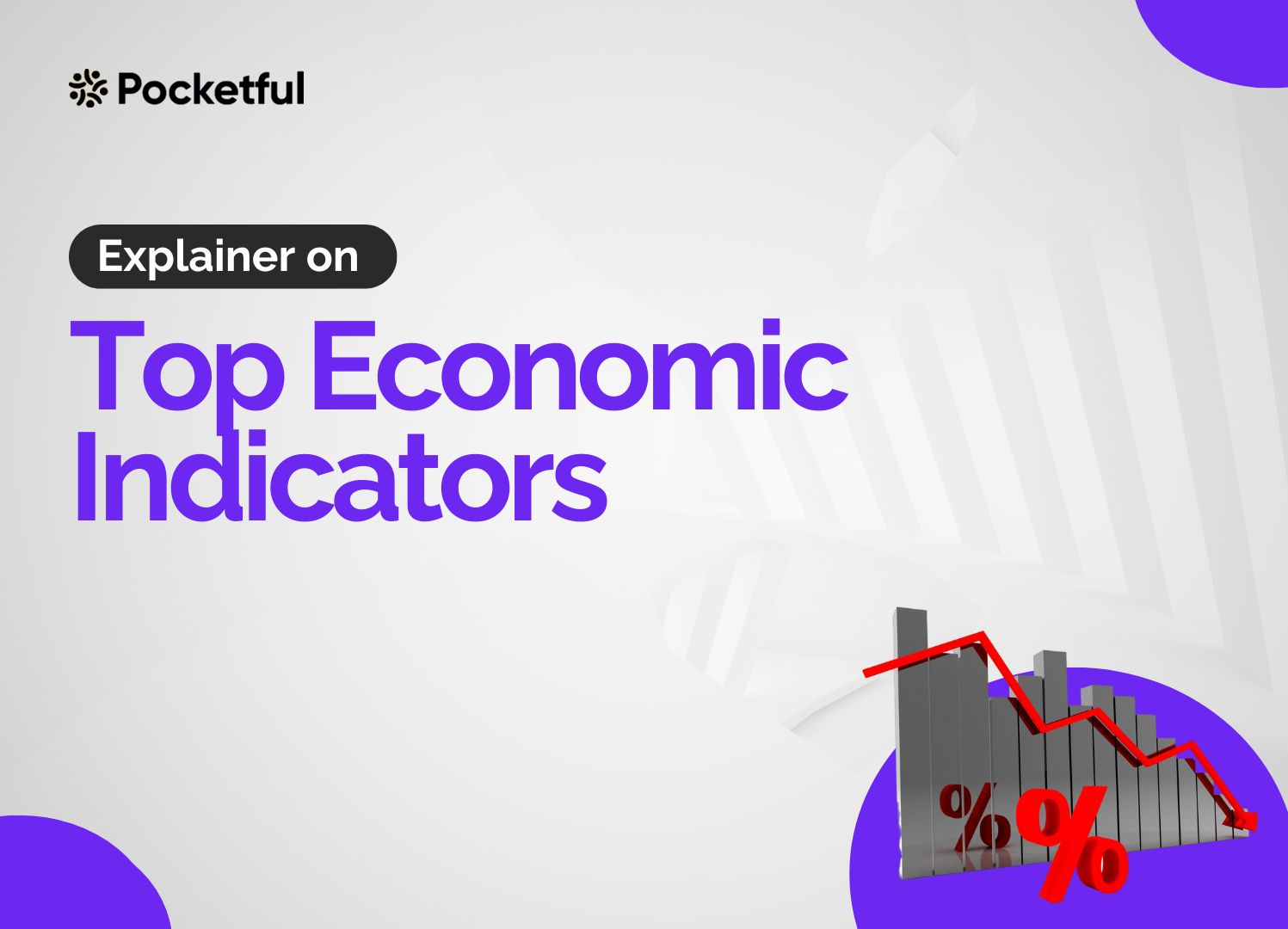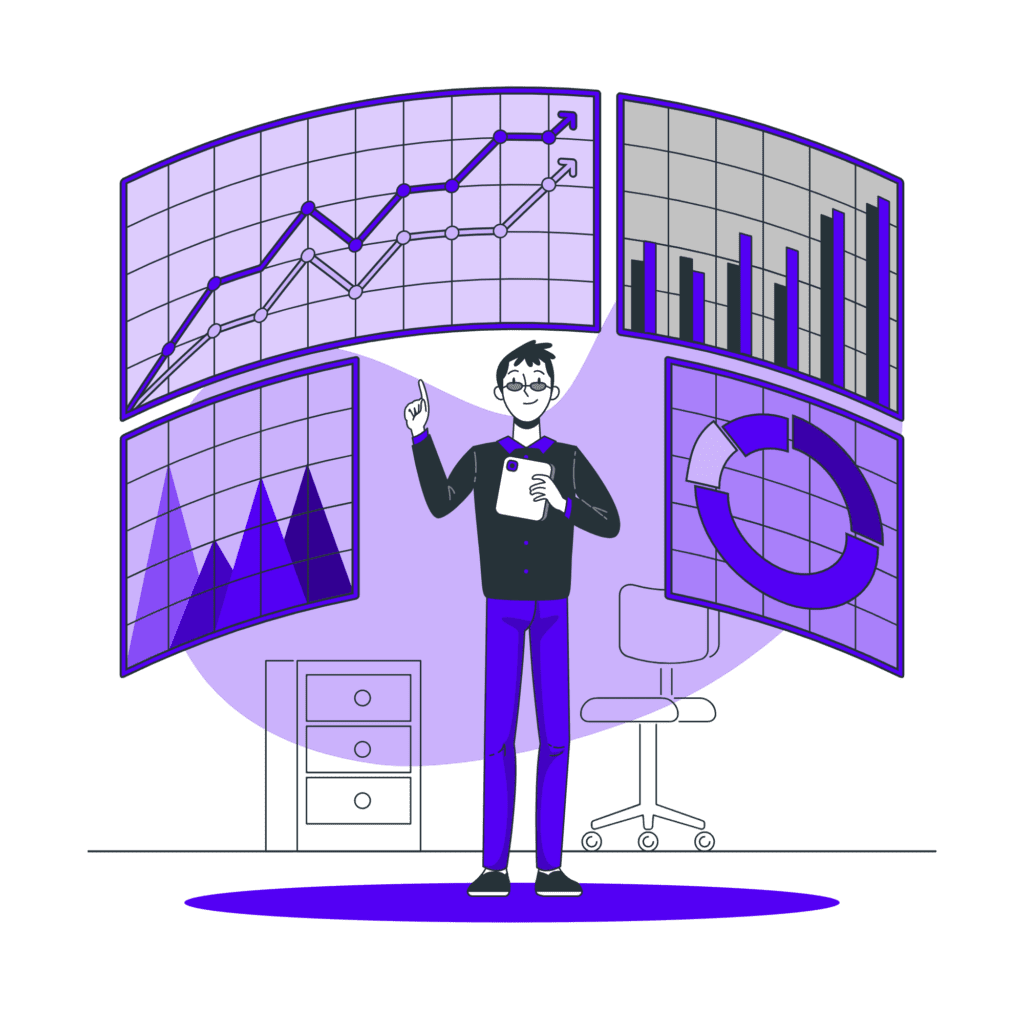| Type | Description | Contributor | Date |
|---|---|---|---|
| Post created | Pocketful Team | Apr-30-24 | |
| Add new links | Nisha | Mar-12-25 |

- Blog
- top economic indicators
Top Economic Indicators: Overview & Importance


Have you ever imagined what makes the economy tick? Economists use a toolbox full of indicators to gauge the health of the economy. Learning about these indicators can help you understand the broader picture of the economy and make informed decisions about your finances.
Here is an analogy – your body has vital signs like temperature or heart rate. Economic indicators function similarly, providing important data points that signal the overall health of the economy.
In this blog, we will crack open the code on some of the most widely used economic indicators, explaining what they are and how they can help you see what is coming down the economic road.
Economic Indicators – An Overview
Economic indicators are statistical tools that provide information about an economy’s health. They are used by economists, businesses, investors, etc., to assess the current state of the economy and to make predictions of economic performance. There are many different economic indicators, but some of the most commonly followed include GDP, Unemployment Rate, Consumer Price Index, Interest rates, etc.
Generally, the Economic Indicators can be broadly classified into three categories:
- Leading Indicators
These indicators tend to change before the overall economy does. They can provide advanced warning of future economic trends. For example, the number of building permits issued can be a leading indicator of future economic activity in the construction industry. - Coincident Indicators
These indicators change along with the overall economy and give a snapshot of the current state of the economy. For example, the unemployment rate is a coincident indicator of economic activity. - Lagging Indicators
These indicators change after the overall economy does. They can confirm trends that have already been identified by leading indicators. For example, the inflation rate is a lagging indicator of economic activity.
Top Economic Indicators

Let’s discuss some of the top economic indicators that economists and businesses track to gauge the health of the economy.
Gross Domestic Product
This is the total market value of all the final goods and services produced in a country in a given year. It is considered the broadest measure of an economy’s health. A rising GDP indicates economic growth, while a falling GDP indicates a recession. Generally, emerging economies such as India, Bangladesh, Indonesia, etc. have a higher GDP growth percentage as compared to developed nations such as the USA, England, etc.
Unemployment Rate
This is the percentage of the labour force that is unemployed and is actively seeking work. Low unemployment is generally considered to be a sign of a strong economy, as it indicates that economy is booming, businesses are hiring, and there are plenty of jobs available.
Consumer Price Index (CPI)
This is a measure of inflation. It tracks the average price of a basket of goods and services that are commonly purchased by consumers. A rising CPI indicates inflation, which can erode purchasing power and consumer confidence. A falling CPI indicates deflation, which can discourage spending and investment. A similar indicator used to measure inflation is the Wholesale Price Index (WPI), which tracks inflation at the producer level. Remember that CPI and WPI both are lagging indicators.
Interest Rates
These are the rates that banks charge from borrowers and pay to lenders. The central bank of every economy (RBI in India) uses interest rates such as Repo Rate, Reverse Repo Rate, etc. to influence the economic activity. Lower interest rates tend to stimulate the economy by making it cheaper for businesses and consumers to borrow money. Higher interest rates tend to slow down the economy by making it more expensive to borrow money.
Trade Balance
The trade balance measures the difference between a country’s exports and imports of goods and services. A positive balance (surplus) depicts that a country is exporting more and importing less, while a negative balance (deficit) indicates the opposite.
Performance of the Stock Market
The stock market performance can be an indicator of investor confidence in the economy. A rising stock market can indicate that investors are optimistic about the future of the economy, while a falling stock market can indicate that investors are pessimistic.
Importance of Economic Indicators
- Big Picture View
Economic Indicators are like headlights, illuminating the road ahead. They provide insights into the current state of the economy and potential future trends, which is why they are widely used by Economists, Businesses, Governments, etc. - Informed Choices
Businesses use economic indicators to make strategic decisions. For example, a rising GDP might signal a good time for expansion, while high inflation might suggest rising prices. Further, Investors use them to analyse the investment risk. - Policy Decisions
Economic Indicators guide policymakers and central banks like the RBI. By analysing factors like unemployment or inflation. They can adjust interest rates or implement stimulus programs to promote economic stability. - Individual Impact
Even individuals benefit from understanding economic indicators. They can help you make personal financial decisions, like planning for retirement or navigating a recession. For example, a rising unemployment rate might encourage an individual to create an emergency fund. - Transparency and Accountability
Economic Indicators provide transparency into an economy’s health. This allows people to hold governments accountable for their economic policies.
Conclusion
By keeping an eye on these indicators, you will be better equipped to understand the economic climate and make informed decisions.
Remember, the economy is a complex system, so no single indicator tells the whole story. Looking at the combination of leading, coincident, and lagging indicators can give you a more well-rounded view of what is going on and an overall picture of the economy.
Frequently Asked Questions (FAQs)
What are Economic Indicators?
Economic indicators help in analysing the health of an economy.
How do interest rates affect the economy?
Interest rates affect the borrowing cost. Lower rates stimulate the economy by making borrowing cheaper, while higher rates slow it down by making borrowing expensive.
Do lagging indicators tell us what has already happened?
Exactly. The inflation rate, for instance, confirms a trend that leading indicators might have hinted.
Why are Economic Indicators important?
The Economic Indicators are important because they guide businesses, investors, and policymakers in making informed decisions about investments, spending, and economic policies.
Can Economic Indicators be misleading?
Yes, Economic Indicators can be misleading. Unexpected events or changes in how data is collected can impact interpretation.
Disclaimer
The securities, funds, and strategies discussed in this blog are provided for informational purposes only. They do not represent endorsements or recommendations. Investors should conduct their own research and seek professional advice before making any investment decisions.